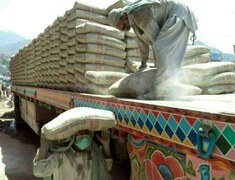Tariff anomalies: PTEA seeks rectification among industrial consumer categories
ISLAMABAD: Pakistan Textile Exporters Association (PTEA) has sought rectification of tariff design anomaly between B-2, B -3 and B-4 industrial consumer categories based on voltage level, system losses and metering configuration.
In a letter to different ministers including Commerce Minister, Jam Kamal and Power Minister, Sardar Awais Leghari PETA has shared critical structural anomaly in the industrial electricity tariff design recently notified by NEPRA.
According to the Association, the current tariff structure contradicts standard grid cost principles and unintentionally dis-incentivizes industrial consumers from investing in high-voltage grid connections, which are otherwise more efficient and economical for the system.
Pakistan Electricity Review 2025 launched
As per the current NEPRA tariff applicable from July 1, 2024, the off-peak variable energy charges are as follows: (i) B2 (400V): Rs. 28.56/kWh ;(ii) B3 (11 kV): Rs 29.39/kWh; and (iii) B4 (132 kV): Rs. 29.11/kWh.
According to technical analysis, industry feedback and research, this tariff design is counterintuitive and regressive as standard cost-of-service methodology prescribes lower tariffs for higher-voltage connections due to reduced distribution and transformation losses, avoidance of LT infrastructure and utility O&M and improved grid load profile and reactive power management.
PETA maintains that despite these benefits, B3 and B4 consumers are being charged higher rates than B2, even though they bear full capital and O&M costs of their own internal power systems while providing low-loss load to the grid.
There is also metering disparity and system responsibility as B2 and B1 consumers are metered after the transformer, meaning utility bears transformer losses and LT O&M whereas B3 and B4 consumers are metered at the HT terminals, and maintain their entire downstream infrastructure independently. This fundamental difference means B3/B4 consumers relieve the utility of significant cost burden-yet are penalized with higher rates.
Another factor is distorted industrial behaviour and technical losses. This anomaly has triggered non-technical bifurcation of industrial load. Large industries are splitting sanctioned loads across multiple B2 (LT) connections to avoid the B3/B4 tariff.
This leads to inefficient grid expansion, higher technical losses due to LT delivery, reduced network visibility for DISCOs, revenue losses and fragmented billing.
In advanced energy systems, HT consumers are incentivized through lower tariffs. Examples from India, Bangladesh, and past WAPDA practices show HT industrial users are charged 10-15% less per kWh than LT consumers, ensuring system efficiency and stability.
PETA has submitted the following recommendations ;(i) tariff rationalization so that B3 and B4 industrial consumers are provided a minimum Rs. 2/kWh discount compared to B2 ;(ii) incorporate voltage level, metering point, and network ownership into industrial tariff design, consistent with engineering and cost-of-service principles; and (iii) introduce regulatory disincentives for industrial consumers operating multiple B2 connections when a B3/B4 interconnection is technically feasible.
“This realignment will reduce system losses, improve grid utilization, promote technically sound industrial expansion, and enhance DISCO financial performance without requiring additional subsidies,” said Khurram Mukhtar, Pattern In-Chief PETA.
Copyright Business Recorder, 2025























Comments